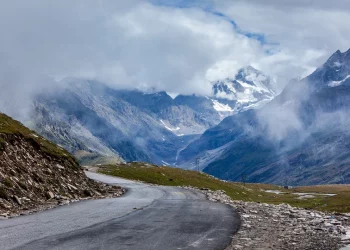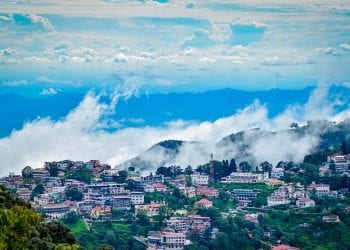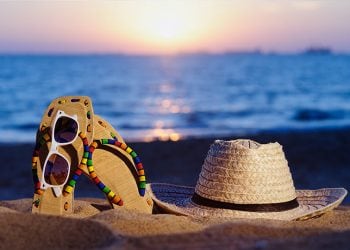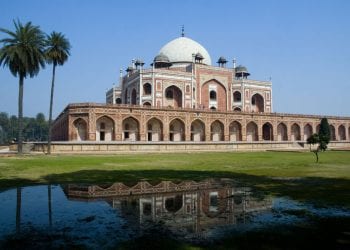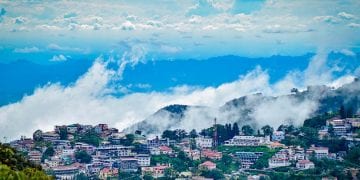5 Most Alluring Places to Visit in Kanyakumari
With a dainty nickname of ‘Cape Comorin’, Kanyakumari lies at the southernmost tip of mainland India. This beautiful town of Tamil Nadu is located at the intersection of the Arabian Sea, the Indian Ocean, and the Gulf of Mannar and thus given a tagline of ‘the land of three seas’. Being a coastal town, it is an important hub for trading services and commerce.
From activities like sightseeing to shopping places, there are numerous things to do in Kanyakumari. A beautiful amalgamation of different cultures, religions, and ideas developed over centuries, the allure of this charming town in Tamil Nadu attracts hordes of tourists all year-round. Blessed with enormous temples, relaxing beaches, and historical monuments, here is a list of the best places in Kanyakumari you must definitely visit!
Find Best Hotels in Kanyakumari
Surrounded by mountains and bordered by vibrant seashores, lined with paddy fields and coconut trees, and the city also boasts of elevated patches of hills with undulating valleys and plains in between the sea and the mountainous terrain. It is believed that this is the only place in India where you can watch the sunrise and sunset at the same beach. Kanyakumari is an emerging popular holiday destination, not pertaining to its unique geographical phenomenon, but also because of the myriad tourist attractions that traffic a huge number of tourists to this city throughout the year.
Top 5 Places To Visit In Kanyakumari
- Thiruvalluvar Statue
- Vivekananda Rock Memorial
- Padmanabhapuram Palace
- Kanyakumari Beach
- Thanumalayan Temple
1. Thiruvalluvar Statue
Dedicated to Tamil poet and accomplished philosopher, Thiruvalluvar, this beautiful statue traces itself on a small island near Kanyakumari. As a memoir to him, the work for this statue started in 1990 and continued till 1999, and finally got completed in the same year. The statue stands as tall as 133-feet and is perched upon a 38-foot pedestal. This pedestal represents the 38 chapters of virtue in Thirukkural. Thirukkural, ‘The Sacred Couplets’, has three sub-sections, which are the Books of Aram, Porul, and Inbam. V. Ganapati Sthapati is credited to be the architect of the statue, and it was unveiled on January 1, 2000.
Full of rich culture and symbolism, this destination is awe-inspiring, and a must-visit place to see in Kanyakumari.
With the crystal clear sea waters in the ground and hazel blue sky in the background, the picture portrayed by this destination is quite humbling. The premises of the statue also showcase a pious temple, which is a quaint spot for meditation. The resounding silence of this religious spot will make you introspect about your life. Furthermore, if you wish to spend a few hours away from the humdrum of daily life, this is your go-to.
Thiruvalluvar Statue is one of the largest statues in India, area wise and is located near the confluence of the Arabian Sea, Bay of Bengal, and the Indian Ocean.
Ten elephant statues are surrounding this gigantic statue symbolising the ten directions – eight for the earth, one for the sky, and one for space down.
2. Vivekananda Rock Memorial
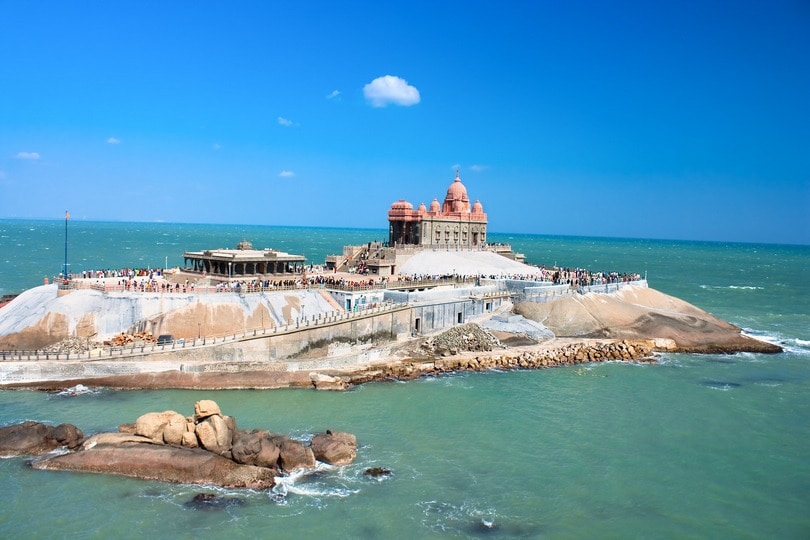
The magnificent Vivekananda Rock Memorial can be seen on a small island off Kanyakumari. It has the picturesque Indian Ocean in its backdrop and hence serves as a peaceful and serene destination for visitors from all across the globe. It is situated on one of the two adjacent rocks protruding out of the Lakshadweep Sea and constitutes the ‘Shripada Mandapam’ and the ‘Vivekananda Mandapam’. The ferry ride up to these rock islands is a thrilling journey and this calls upon a lot of nature lovers and adventure enthusiasts.
This statue depicts spectacular architecture and was built in the year 1970 and has been a major tourist attraction ever since. The island on which the statue is located is said to have been the site where Vivekananda attained enlightenment. The Shripada Mandapam has a study hall and a museum, where you can explore Vivekananda’s life and work in depth. This Mandapam adds to the spiritual significance and of the memorial along with emphasizing its purity. It is the perfect spot to meditate and introspect. With its serene surroundings and majestic construction, the Vivekananda Memorial is an unforgettable experience.
According to historical tales and legends, it is believed that Goddess Kumari performed austerity on this rock. There is a ‘Dhyana Mandapam’ located beside the memorial, which serves as the meditation hall for the visitors who want to meditate. The style of architecture followed here is distinctive and incorporates various temple styles from all over India. These rocks are surrounded by the Laccadive Sea.
Swami Vivekanand was a disciple of Sri Ramakrishna Paramahamsa, the founder of Ramakrishna Mission and this construction was dedicated to him. Built between the years 1963 and 1970 and adorned in red and blue granite, it is situated on the top of a rock island, at a height of about 17 meters above sea level, covering a total area of approximately 6 acres.
Shripada Mandapam has a square floor plan and it includes Garbha Graham (Sanctum Sanctorum), Inner Prakaram, Outer Prakaram, and an Outer Platform. The Outer Platform surrounds the Shripada Mandapam. Vivekananda Mandapam and Shripada Mandapam are designed in such a way that the vision of Swamiji’s statue in Pralima Mandapam is directed towards the Shripadam.
3. Padmanabhapuram Palace
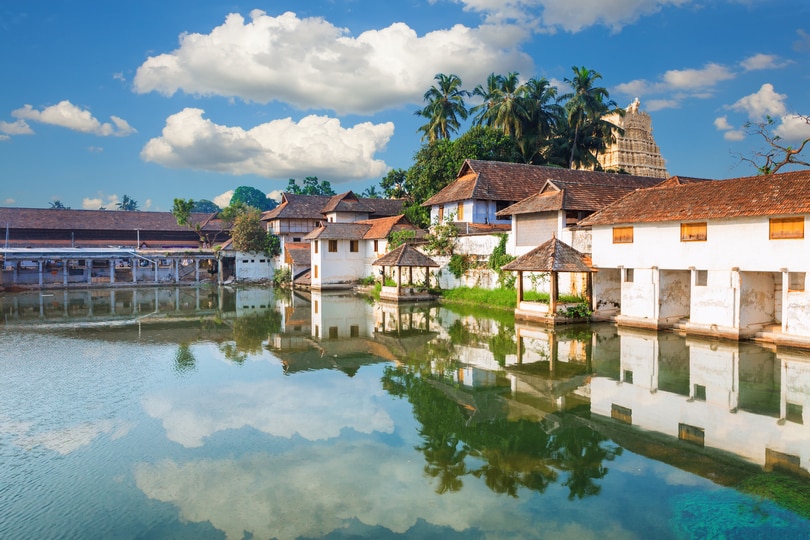
Padmanabhapuram Palace is believed to have been built in the 16-century and houses many unique antiques and artifacts. Reflecting on the rich and diverse cultural heritage of the country, it is a must-visit place to see in Kanyakumari. This was the capital city of the erstwhile Travancore Empire and has been a bonafide symbol of strength to the region’s history. What is worth noting about this palace is the fact that Padmanabhapuram Palace is made entirely from wood and no other material. Decked up with exceptional wooden carvings and designs, the simplicity of the palace is what makes it a truly charming destination.
The Padmanabhapuram Palace is segregated into several divisions, each of which has a significance of its own. Many unique articles such as old Chinese jars, a variety of weapons, stone sculptures, furniture, large mirrors, paintings, brass lamps, wood, a wooden cot, and a polished stone cot are housed in the Padmanabhapuram Palace for safekeeping. Kerala Government is responsible for maintaining this enchanting palace and Padmanabhapuram Palace draws hundreds of visitors daily. It is often touted as one of the best 10 palaces in the world.
You might have heard about this being the abode of the Travancore rulers, as it was the Venad ruler, Iravi Varma Kulasekhara Perumal who gave Thucklay this palace dipped in Kerala style of architecture around 1601 AD. Later around 1750 not only did Padmanabhapuram Palace get a facelift but also its name which was given by King Marthanda Varma who ruled the kingdom by the name Padmanabha Dasa, slave of Lord Padmanabha and devoted the whole kingdom to the family deity Sree Padmanabha, an incarnation of Lord Vishnu. The floral carvings, black granite floor, pictures of Krishna, murals from 17-century and 18-century, mahogany musical bow, windows of coloured mica are some of the fascinating items on display here. Also, take a look at the medicinal bed present in the King’s room, secret underground passages, and the brass-made hanging lanterns which are lit to date.
Padmanabhapuram Palace holds the honorary mention of being among the top ten palaces in the world. The Rajas of Travancore ruled the city of Travancore from this fort till 1790. Later the capital was changed from Padmanabhapuram to Thiruvananthapuram.
Padmanabhapuram Palace has a vast spread over a sprawling 6 acres and is situated at the foot of Veli Hills of Western Ghats. This palace was constructed by Iravipillai Iravivarma Kulasekhara Perumal in the 17-century. This palace is mostly a wooden structure that exhibits the traditional architectural style that Kerala boasts. The walls of the palace have wooden planks, which have carvings of Anantasayana, which depicts Lord Vishnu in a reclined pose on the serpent lord, Ananta. The floor of the palace is made of burnt coconut shells, laterite, lime, and sand.
The interiors of the Prayer Hall are designed with 50 murals that depict Lord Vishnu with his consorts and Lord Krishna and his gopikas. Several paintings depicting important episodes from the life of Marthanda Verma can be seen on the walls of the corridor leading to the guest house.
4. Kanyakumari Beach
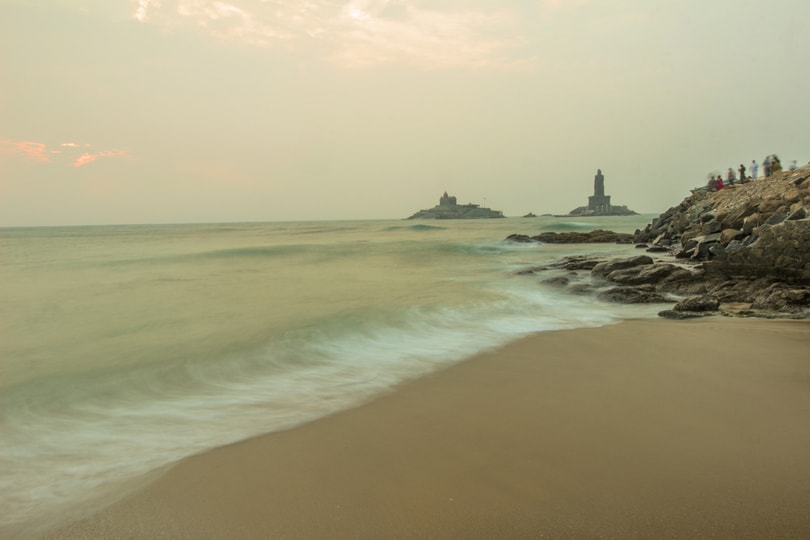
Situated at the confluence of the three oceans namely, the Indian Ocean, Bay of Bengal, and the Arabian Sea this picturesque beach features amongst the most prominent places to see in Kanyakumari. Having a rocky surface, it is unsuitable for swimming, however, you can splash in the waves for some fun family time. The beach is appropriate for revelling in the beautiful views around.
There is a lighthouse at the beach, which will fetch you some of the most fantastic views of the vast expanses of salty water stretching till the horizon. There is also ample opportunity to shop for handicrafts made of rustic seaside materials and other things as well. Vaisakha, Kalabham, and Navaratri are some of the festivals and fairs that are celebrated here on a significant scale.
5. Thanumalayan Temple
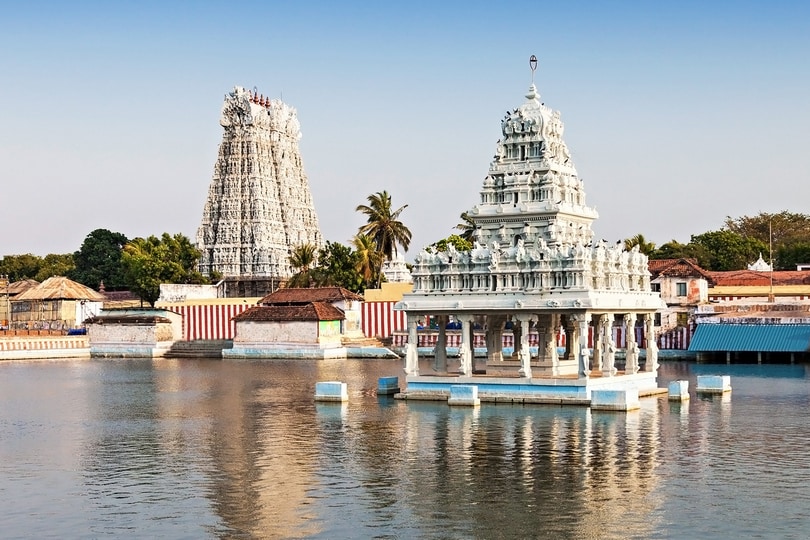
Inviting a calm and spiritually rejuvenating experience for all the Hindu worshippers is the Thanumalayan Temple. It is placed roughly 13 kilometers away from the city of Kanyakumari. What usually calls in the travellers to this famous temple of Kanyakumari is its phenomenal architecture, finely carved sculptures, and seven-story white Gopuram, which are truly magnetic and a sight to behold.
Moreover, the temple that stands now in Suchindram was built in the 17-century and sees worshippers bowing down to praise Lord Vishnu, Lord Shiva, and Lord Brahma who are also a part of the temple’s name where “Stanu” refers to Lord Shiva; “Mal” to Lord Vishnu; and the “Ayan” means Lord Brahma. This unique temple is the only temple in the world where the holy trinity of Brahma, Vishnu, and Shiva is enshrined at the same place as a single deity (called Sthanumalayan). One can also see a towering 22-feet Hanuman statue that is one of the highest in the country. Beautiful gopurams, exquisite carvings, musical pillars, and a powerful spiritual aura are some of the vital features to be observed here. The 18-feet high musical pillars carved out of single granite stone are a massive attraction. There is a strict dress code for men and women and one needs to be wary of the so-called guides and pandas who are on the lookout to extract money from tourists.
Now that you have a fair idea about some of the best places to swing by in Kanyakumari, you can plan your trip accordingly. Apart from these destinations, Kanyakumari is a vibrant city that has many corners and spots that are waiting to be discovered. From friendly locals, fascinating tourist places, and opportunities to shop for handicrafts the city has it all. Plan your trip right away and experience tranquillity in its best form.
Happy Journey!
Recent Posts
Top Picks

- OYO
 15 April, 2024
15 April, 2024 - Cultural Tour

- OYO
 15 April, 2024
15 April, 2024 - Cultural Tour

- OYO
 15 April, 2024
15 April, 2024 - Cultural Tour

- OYO
 15 April, 2024
15 April, 2024 - Cultural Tour

- OYO
 15 April, 2024
15 April, 2024 - Cultural Tour

Please rotate your device
Please go back to portrait mode for the best experience



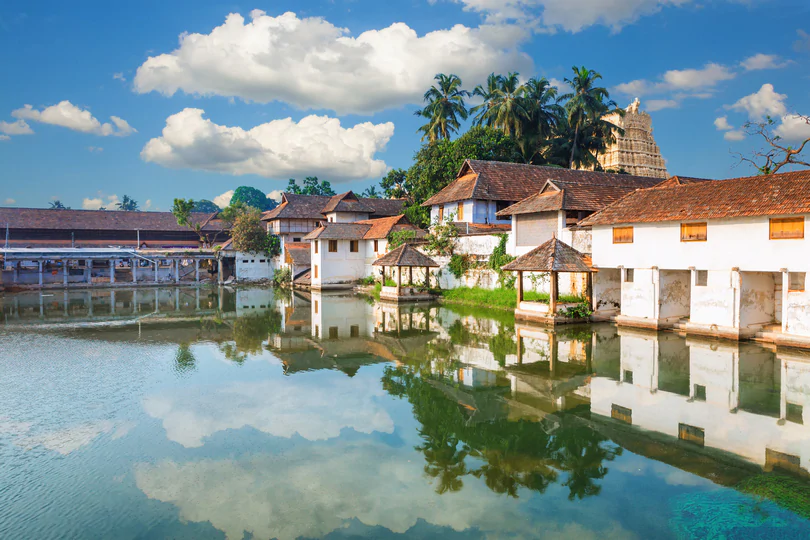

 April 15, 2024
April 15, 2024 